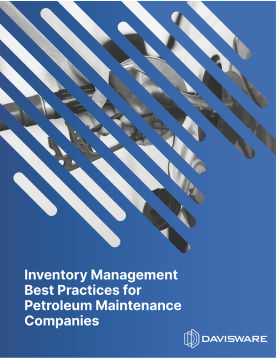Before digging into the petroleum equipment maintenance industry’s best path forward, it’s important to understand what challenges face the industry. Here are a few of the most difficult issues that may be bubbling below the surface:
Keeping Track of Core Parts
As you know, core returns are a foundational part of any petroleum equipment service company’s operation. However, it’s easy to overlook how heavily inefficient core parts tracking weighs on your bottom line. To maintain revenue, you need to know what’s been replaced and who has the defective parts you need to return to a supplier sitting on their truck. All the while, you need to know which of the core parts you have on hand need to go back to manufacturers for credit. Anytime you overlook a potential return, you’re losing chunks of money from your company’s bottom line.
Managing Core Returns
We all know the petroleum equipment maintenance industry isn’t like other sectors when it comes to returns. When a core part stops working, you can’t afford to just toss it out. For the majority of core parts, you need to return failing items to the manufacturer, and if you’re not tracking reimbursement credits property, it’s easy for money to leak out of your company.
Trying to Scale Manual Inventory Management Processes
Often, a petroleum equipment services company will start out managing inventory and core returns manually, only to realize the team is overwhelmed when the organization grows. Unfortunately, as the company takes on more customers and deals with more parts and manufacturers, it’s easy for manual inventory management processes to break down. In turn, you may end up losing thousands on missed parts credits or unmet customer demand.
Setting Accurate Pricing
If you’re not pricing coreable transactions into your daily billing, it’s easy to lose swaths of money quickly. For instance, imagine you pay $1,000 to your supplier for a part, but if you bring in a defective part, you get $600 back. Too often, a company will end up passing that final saving onto the customer—even when they aren’t sure a job will be subsidized by a return. Ultimately, that can leak money out of your company.
The bottom line? If you don’t know exactly what you’re saving on parts, you won’t know how much you need to be charging. That pricing error can turn into major losses.
Balancing Parts Inventory for Jobs
Petroleum equipment maintenance companies don’t just have to worry about managing core returns in the back office. Inventory management also weighs on your technicians’ ability to deliver service. If you don’t know where parts are, what parts you have on hand, and which technicians need a piece of equipment, your first-time fix rates can suffer. By streamlining these inventory processes, it’s easier to get the right part to the right tech at the right time, making it seamless to reach more customers and bring in more revenue.



